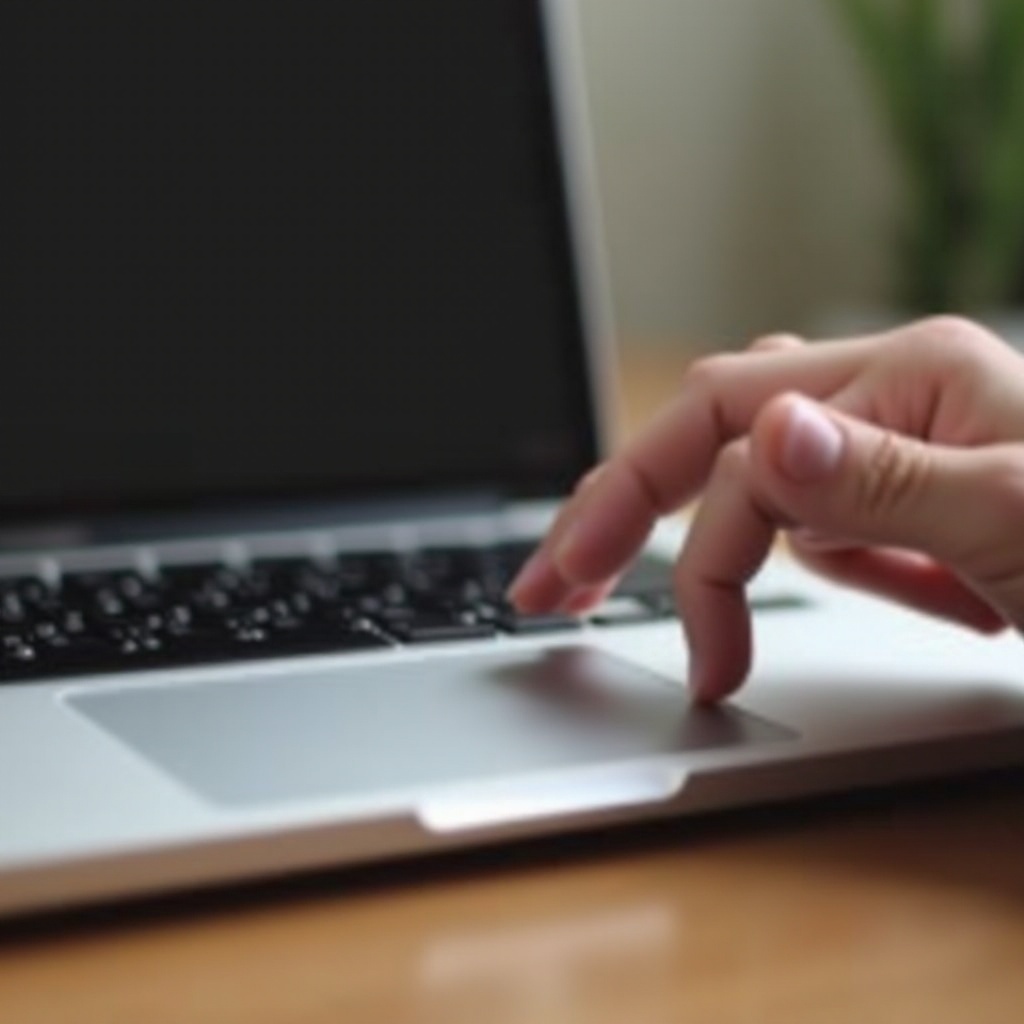Introduction
Using a laptop efficiently requires mastering certain basic functions, with right-clicking being one of them. While it seems simple, understanding how to right-click on different operating systems such as Windows, macOS, and Linux can significantly improve user interaction and productivity. This guide will explore right-clicking techniques across these popular systems and provide solutions to common problems users face. Dive into this ultimate guide to learn how to handle everything from touchpad gestures to keyboard shortcuts for right-clicking.

Right-Clicking on Windows Laptops
When it comes to Windows laptops, right-clicking can be a straightforward process, whether you’re using a touchpad, an external mouse, or keyboard shortcuts. Understanding these methods will help you navigate your Windows laptop with ease.
Touchpad Techniques for Right-Clicking
Most touchpads on Windows laptops include designated areas for right-clicking. To right-click using the touchpad:
- Locate the lower right corner of the touchpad.
- Tap or press down on this corner to execute a right-click command.
Alternatively, some touchpads support two-finger tapping:
- Place two fingers gently on the touchpad.
- Tap lightly to simulate a right-click.
Using an External Mouse for Right-Click
An external mouse remains the traditional method for a straightforward right-click experience on Windows laptops. Simply press the right-side button on your mouse to perform a right-click.
Keyboard Shortcuts for Right-Click
For users who prefer keyboards, Windows offers a shortcut for right-clicking:
- Navigate to the item or text you want to right-click using the keyboard arrows.
- Press ‘Shift’ + ‘F10’ to open the context menu, effectively performing a right-click.
Understanding right-clicking on Windows enhances interaction with the operating system. Expanding on this, let’s explore how Mac users can achieve the same functionality.
Right-Clicking on MacBooks
MacBooks offer various options for right-clicking, addressing different user preferences. Leveraging these options can significantly improve your MacBook user experience.
Setting Up Secondary Click through System Preferences
For those new to MacBooks, setting up a secondary click is essential for right-click functionality:
- Open ‘System Preferences’ from the Apple menu.
- Click on ‘Trackpad.
- Under the ‘Point & Click’ tab, check ‘Secondary click.
- Choose your preferred option—use two fingers, or click in the bottom right or left corner.
The Control-Click Method for Right-Clicking
The Control-click method offers a quick and effective alternative:
- Press the ‘Control’ key on your keyboard.
- Click on the trackpad or mouse to perform a right-click.
Utilizing Force Click and Haptic Feedback
MacBooks with Force Touch trackpads add features like Force Click, enhancing right-clicking:
- By pressing firmly on the trackpad, you can trigger a Force Click.
- The haptic feedback confirms the action.
While MacBooks offer innovative right-click methods, Linux users have their own set of techniques, which we will delve into next.

Right-Clicking on Linux Laptops
Linux laptops have varied right-click methods depending on the distribution in use. Here’s how you can manage right-clicking in Linux environments.
Touchpad Gestures on Linux
For users who favor touchpad gestures:
- A two-finger tap on the touchpad often performs a right-click.
- Check system settings, as some Linux distributions require gesture settings to be enabled.
Configuring Right-Click Options in Linux Settings
If adjustable settings are needed:
- Open ‘Settings’ from your application menu.
- Navigate to ‘Mouse & Touchpad’ settings.
- Configure right-click options according to your preference.
Using Terminal Commands for Right-Click Setup
Advanced users might opt for terminal commands:
- Open the terminal.
- Enter specific commands for your Linux distribution to customize right-click settings as needed.
These Linux solutions ensure efficient right-clicking across distributions. Despite grasping these techniques, users may encounter issues. Let’s proceed to troubleshooting common right-click problems.
Troubleshooting Right-Click Issues
Right-clicking problems are not uncommon and often resolve with minimal technical intervention.
Common Problems with Right-Click
Some frequent issues include:
- Unresponsive touchpad areas.
- External mouse right-click failure.
Diagnosing these issues is the first step towards resolution.
Updating Software and Drivers
Software or driver updates can often fix right-click issues:
- Check for OS updates related to hardware functionality.
- Visit your laptop manufacturer’s site to update touchpad or mouse drivers.
New versions often resolve software bugs, restoring right-click functions. As we wind down, here’s a summary to round off everything.

Conclusion
Mastering the art of right-clicking on various laptop systems can greatly enhance your computing experience. Whether using Windows, Mac, or Linux, understanding the subtleties of each system ensures you can perform tasks efficiently and troubleshoot effectively when issues arise. Customize settings to match your needs and check for software updates to avoid common pitfalls.
Frequently Asked Questions
How do I right-click on a laptop without a mouse?
Use the touchpad by tapping with two fingers, or employ keyboard shortcuts like ‘Shift’ + ‘F10’ to right-click without using a mouse.
Why is my laptop right-click not working?
Right-click issues might stem from software glitches or outdated drivers. Updating your operating system or driver software usually resolves these issues.
Can I customize right-click settings on my laptop?
Yes, all major operating systems like Windows, macOS, and Linux allow users to customize right-click settings through system preferences or BIOS setup.
